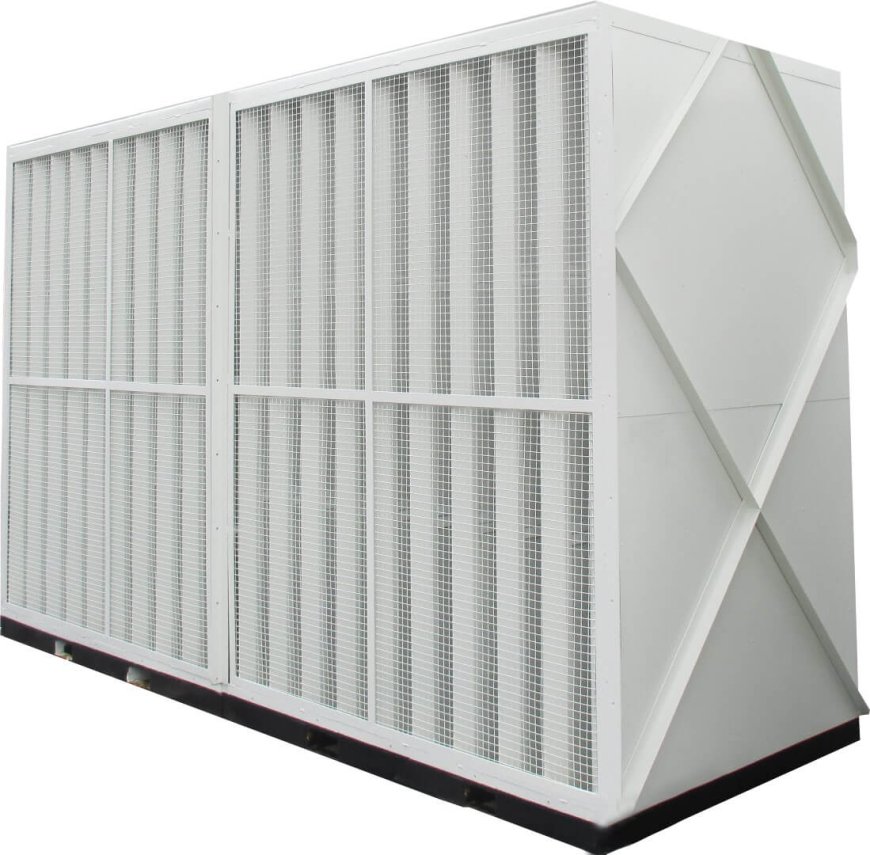Enhancing Comfort and Efficiency: The Role of Acoustic Enclosures for Air Conditioners
Acoustic enclosures for air conditioners reduce noise pollution, enhance efficiency, and extend equipment lifespan in various environments.

In the realm of modern living and working spaces, air conditioners play a pivotal role in maintaining comfort and productivity. However, alongside their benefits, they often introduce noise pollution that can disrupt environments both indoors and outdoors. This issue has spurred the development of acoustic enclosures for air conditioners, a technology designed not only to mitigate noise but also to enhance the efficiency and longevity of air conditioning systems.
Understanding the Need for Acoustic Enclosures
The hum of air conditioners, especially in densely populated urban areas or quiet office settings, can be more than just a nuisance—it can affect concentration, communication, and overall well-being. This noise originates from various components of the air conditioning unit, including compressors, fans, and motors, which operate at varying frequencies and intensities.
Acoustic enclosures address this problem by serving as sound barriers around these noisy components. Made from specialized materials that absorb, block, or dampen sound waves, these enclosures significantly reduce the transmission of noise to the surrounding environment. This reduction not only creates a quieter atmosphere but also contributes to regulatory compliance with noise pollution standards in residential, commercial, and industrial settings.
Benefits Beyond Noise Reduction
While noise reduction is the primary function of acoustic enclosures, their benefits extend beyond mere quietness:
1. Improved Efficiency
By containing and reducing noise, acoustic enclosures help maintain the optimal functioning of air conditioning systems. Unwanted noise can indicate inefficiencies or mechanical issues within the unit. By addressing these acoustically, the overall efficiency of the system can be preserved or even enhanced.
2. Extended Lifespan
Excessive noise can accelerate wear and tear on components due to vibrations and operational stress. Acoustic enclosures dampen vibrations, thereby reducing mechanical strain and extending the lifespan of air conditioning units. This longevity translates to cost savings through reduced maintenance and replacement expenses.
3. Enhanced Environmental Adaptability
In outdoor environments, air conditioners are exposed to varying weather conditions, which can affect their performance. Acoustic enclosures provide an additional layer of protection against elements such as rain, wind, and dust, thereby safeguarding the equipment and ensuring consistent performance regardless of weather conditions.
4. Customization and Aesthetic Integration
Modern acoustic enclosures are designed with flexibility in mind, allowing for customization to fit different types and sizes of air conditioning units. They can also be aesthetically integrated into architectural designs, blending seamlessly with surrounding structures without compromising visual appeal.
Practical Applications
The application of acoustic enclosures spans across diverse sectors:
1. Residential
In residential areas, especially in urban settings or multifamily dwellings, acoustic enclosures help maintain peace and quiet, promoting a conducive living environment.
2. Commercial
Offices, hospitals, and educational institutions benefit from reduced noise levels, fostering a more productive and comfortable atmosphere for occupants.
3. Industrial
Manufacturing facilities and warehouses utilize acoustic enclosures to mitigate noise from large-scale HVAC systems, enhancing worker safety and compliance with occupational health regulations.
Considerations for Installation and Maintenance
Installing acoustic enclosures requires careful consideration of several factors:
1. Site Assessment
Conducting a thorough assessment of the air conditioning unit's location and surrounding environment helps determine the optimal placement and design of the enclosure.
2. Material Selection
Choosing appropriate materials based on noise levels, environmental conditions, and aesthetic requirements ensures effective noise reduction and durability.
3. Ventilation and Access
Proper ventilation within the enclosure is essential to prevent overheating of the air conditioning unit. Additionally, ensuring easy access for maintenance and repairs is crucial for long-term functionality.
4. Regulatory Compliance
Adhering to local noise ordinances and building codes ensures compliance and avoids potential fines or legal issues related to noise pollution.
Conclusion
In conclusion, acoustic enclosures for air conditioners represent a significant advancement in enhancing comfort, efficiency, and environmental quality. By effectively reducing noise pollution, these enclosures contribute to a quieter and more sustainable built environment while prolonging the lifespan and optimizing the performance of air conditioning systems. As technology continues to evolve, integrating acoustic solutions into HVAC designs promises to further improve living and working conditions for individuals and communities worldwide.
What's Your Reaction?
 Like
0
Like
0
 Dislike
0
Dislike
0
 Love
0
Love
0
 Funny
0
Funny
0
 Angry
0
Angry
0
 Sad
0
Sad
0
 Wow
0
Wow
0









































